College of Engineering | Department of Aerospace Engineering
Advanced Flow Diagnostics and Experimental Aerodynamics Laboratory
Aircraft Icing Physics and Anti-/De-icing Technology
Ice accretion on cold surfaces is a topic of great concern for numerous engineering applications. Aircraft icing is widely recognized as a significant hazard to aircraft operations in cold weather. When an aircraft or rotorcraft flies in a cold climate, some of super-cooled droplets would impact and freeze on exposed aircraft surfaces to form ice shapes. In moderate to severe conditions, an airplane can become so iced up that continued flight is impossible. The airplane may stall at much higher speeds and lower angles of attack than normal. It can roll or pitch uncontrollably, and recovery may be impossible. Ice can also cause engine stoppage by either icing up the carburetor or, in the case of a fuel-injected engine, blocking the engine’s air source. The importance of proper ice control for aircraft operation in cold climate was highlighted by many aircraft crashes in recent years like the deadly accident occurred at Clarence Center, New York on 02/12/2009 with 50 souls lost in the accident of a Bombardier DHC-8-400 aircraft operating as Continental Flight 3407. Military operates airfields across the world, many of which require de-icing/anti-icing to be conducted if operations are to continue during cold weather. Icing has been found to causes military mission delays during ground de-icing of aircraft and even mission cancellations and abortions because of forecast or actual in-flight icing. Regardless of the aircraft type being supported, the methods of de-icing /anti-icing and the concerns that accompany it remain the same. While research progress has been made in recent years in providing better understanding about aircraft icing phenomena, aircraft icing remains as an important unsolved problem at the top of the National Transportation Safety Board’s most wanted list of aviation safety improvements.
Advancing the technology for safe and efficient operation of numerous functional devices in atmospheric icing conditions requires a better understanding of icing physics. While a number of theoretic and numerical studies have been conducted in recent years to develop ice prediction tools for improved ice protection system designs, many details of important microphysical processes that are responsible for ice formation and accretion on frozen cold surfaces are still unclear. ISU icing physics and anti-/de-icing research team is the leading group in the fields of icing study and anti-/de-icing technology and is poised to take advantages of the emerging research opportunities in this area. Icing Research Tunnel of Iowa State University (ISU-IRT), which was originally donated by UTC Aerospace System (former Goodrich Inc.) to ISU, is a newly refurnished, research-grade icing wind tunnel. ISU-IRT is the only university-based, multi-functional icing research tunnel in the entire USA. It can be run over a range of test conditions from rime ice to extremely wet glaze ice, which can be used to duplicate/simulate icing phenomena over a range of conditions for icing physics studies pertinent to aircraft/wind turbine icing and various anti-/de-icing applications.
ISU icing physics and anti-/de-icing research team is leveraging the uniqueness of the ISU-IRT and the technical strengths and expertise of ISU researchers on icing physics and modeling; experimental aerodynamics and heat transfer; computational fluid mechanics (CFD); multiphase physics modeling and simulation; high-performance computing and data mining; high-speed imaging and non-destructive evaluation (NDE); surface chemistry; hydrophobic coatings and surface engineering; smart materials and nanotechnology to synergize a research and education integrated program to conduct theoretical, computational, and experimental investigations on important micro-physical processes pertinent to aircraft icing and anti-/de-icing technology. A better understanding of the important micro-physical processes will enable us to improve current icing accretion models for more accurate prediction of ice formation and accretion processes on aircraft as well as to develop more effective and robust anti-/de-icing strategies to ensure safer and more efficient operation of aircraft in cold weather.
The working parameters of ISU-IRT are:
-
Test section size: W X H X L = 400mm (width) by 400mm (height) by 2,000mm (length);
-
Airflow speed: Vair = 5 to 60 m/s;
-
Airflow temperature: Tair = 20oC to -30oC;
-
Water Droplet Size: d = 10 ~ 50 micrometers;
-
Liquid Water Content: LWC = 0.05 to 10 grams/cubic meter.
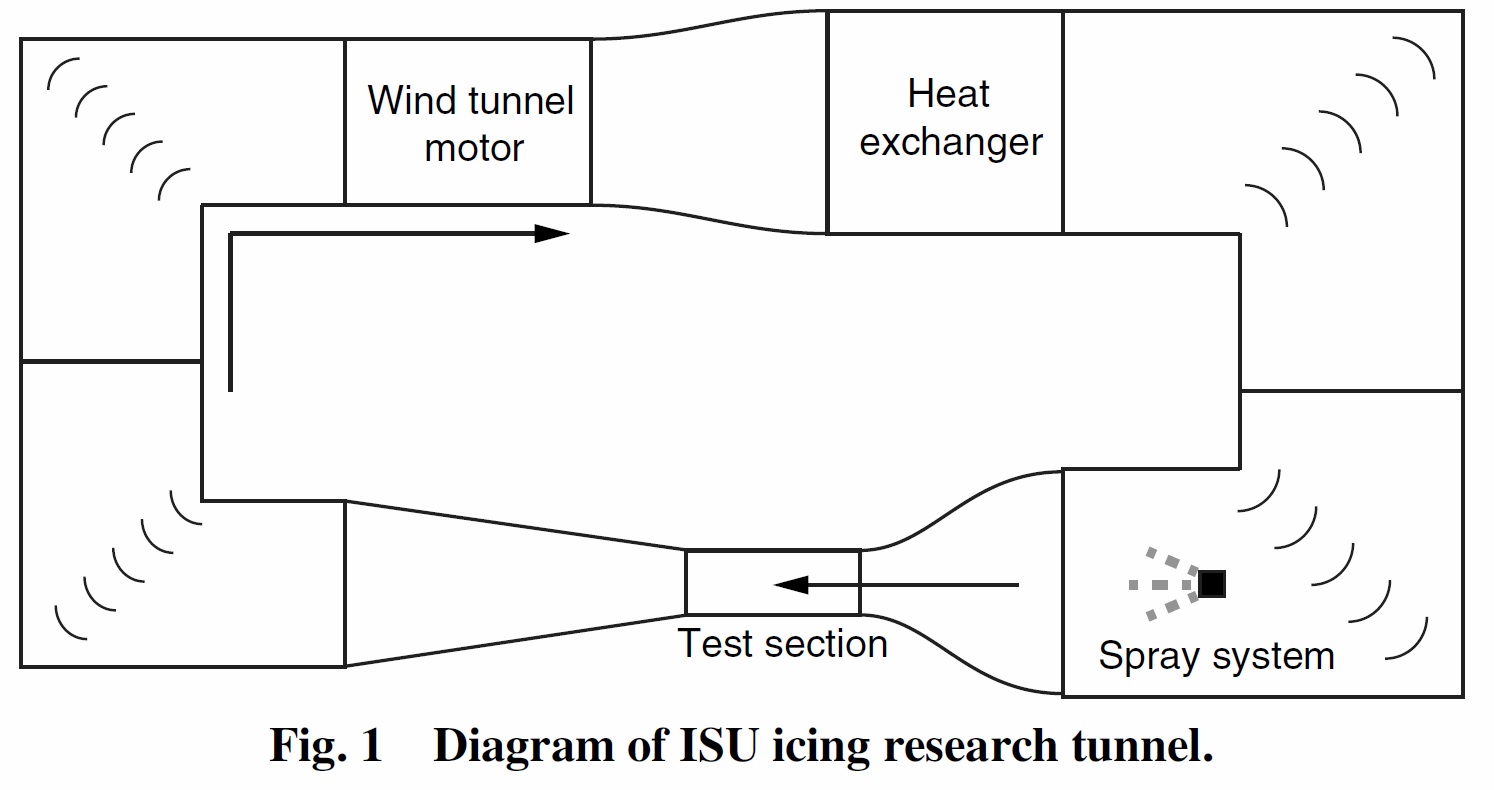

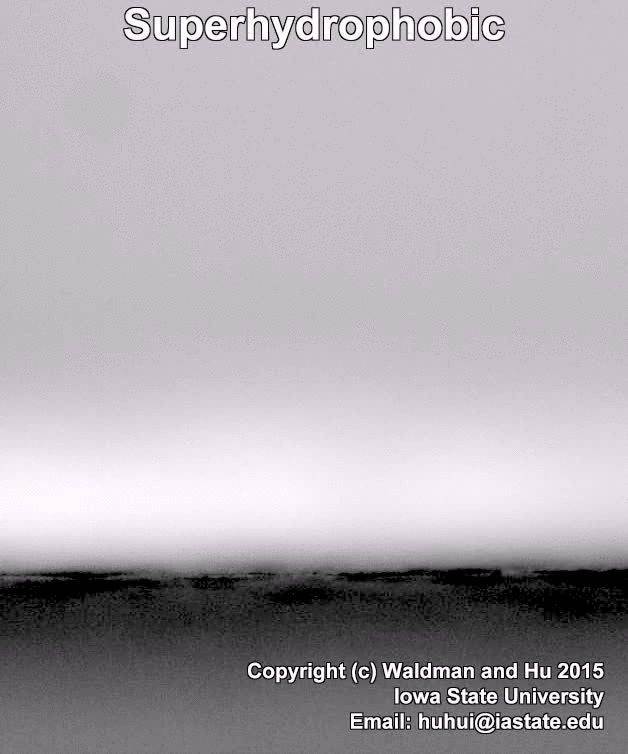
Comparison of water droplet impinging onto a surface with and without superhydrophobic coating (Waldman & Hu, 2014)

(a). Over the upper surface of the airfoil

(b). Over the lower surface of the airfoil
Glaze ice accretion process over a NACA0012 airfoil with airflow speed V=35m/s, T=-8°C, α = 5.0 deg. (Waldman & Hu, 2014)
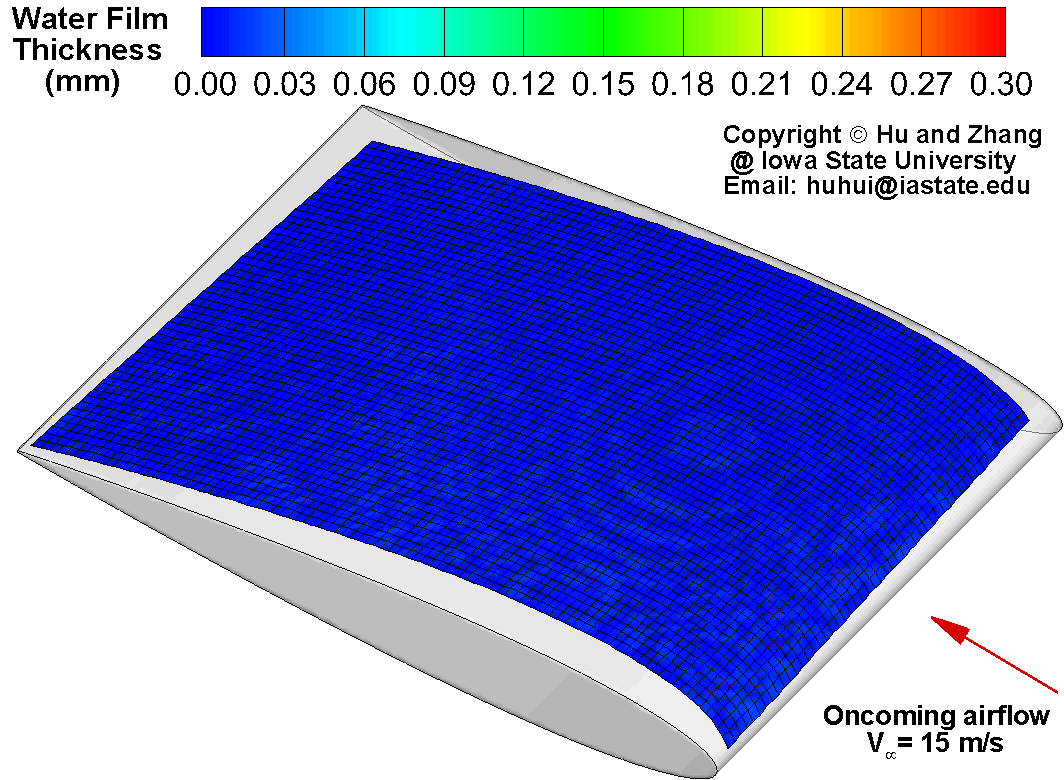
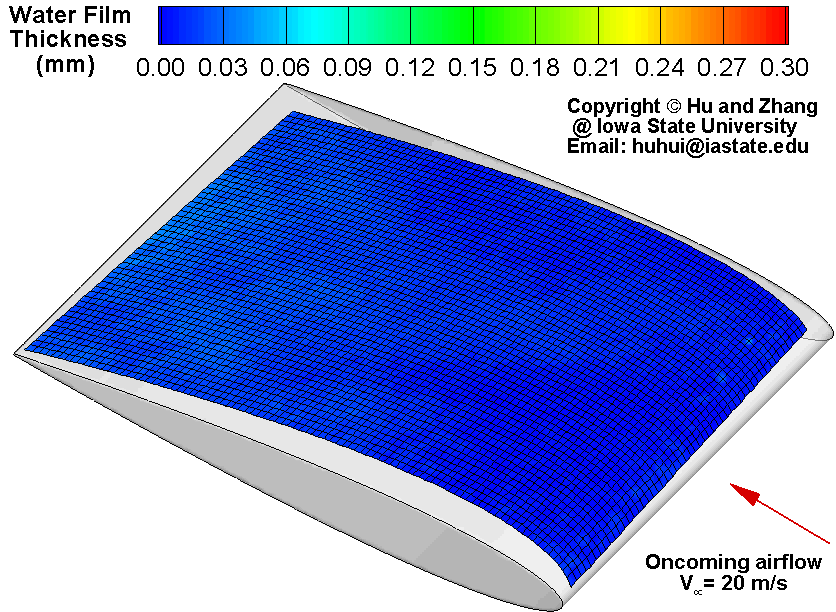
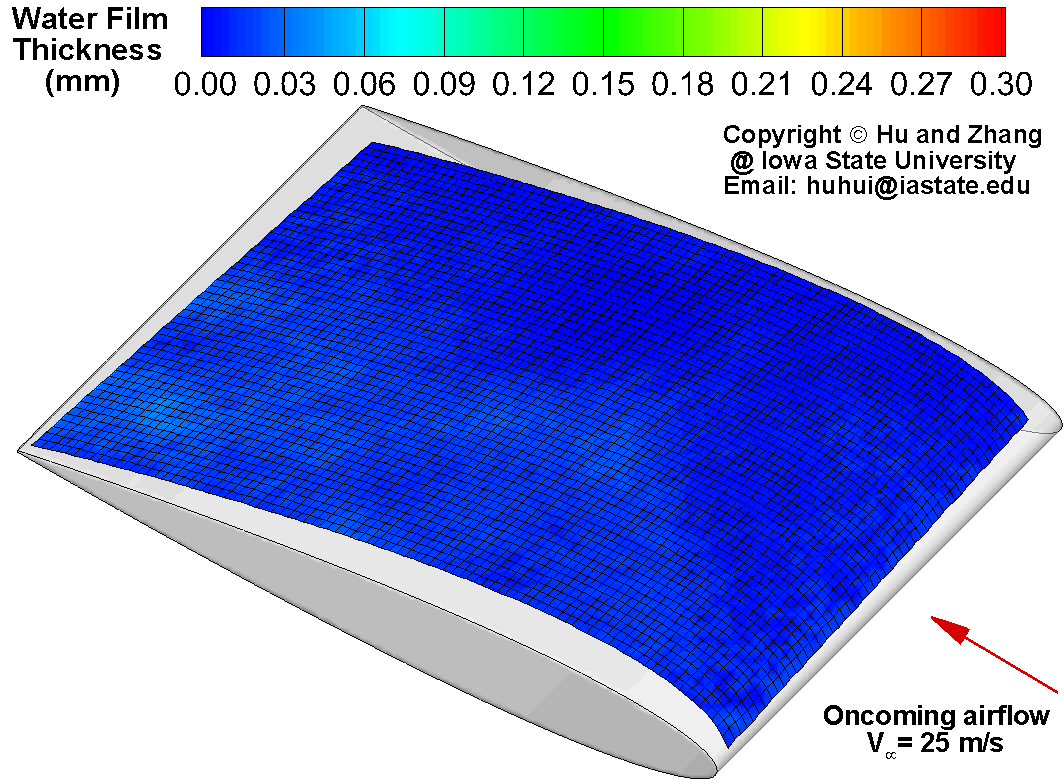
(a). airflow velocity V=15m/s (b). airflow velocity V=20m/s (c). airflow velocity V=25m/s
Surface water rivulet/film flow over a NACA0012 airfoil pertinent to aircraft icing phenomena (Zhang & Hu et al. 2013)
Acknowledgements: Our research on icing physics and anti-/de-icing technology are supported by following sponsors:
Link to the News about our research on icing physics and anti-/de-icing technology:
-
05/09/2014: Aerospace professor Hui Hu awarded new base program for Iowa Space Grant Consortium!
-
02/14/2014:
Iowa research could help prevent flight delays from
ice. Read more at: -
01/20/2014: Our research on aircraft icing and wind turbine anti-de-icing is highlighted at the headline news of Iowa State University!
KCCI News: http://www.kcci.com/news/central-iowa/iowa-research-could-help-prevent-flight-delays-from-ice/24486462#ixzz2tQLCirQ5;
Ames Tribune: http://amestrib.com/news/isu-researchers-study-ice-turbines-airplanes;
The Gazette: http://thegazette.com/2014/02/13/iowa-state-university-icing-research-tunnel-could-improve-deicing-technology/.
![]()
![]()
Department of Aerospace Engineering, Iowa State
University, 2271 Howe Hall, Room 1200, Ames, Iowa 50011
Copyright © Iowa State University. All rights reserved.

 National Science Foundation
National Science Foundation